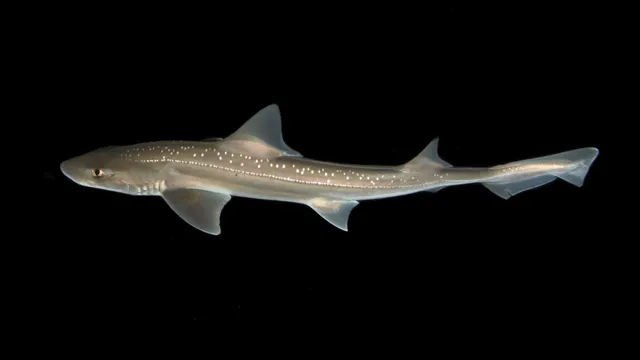
Sharks can communicate with clicking sounds, researchers discover
2025-04-03 00:00- Researchers at the University of Auckland discovered that rig sharks make a clicking sound during observations.
- The clicking sound is akin to a spark of electricity and was initially found in 2021.
- This discovery challenges existing beliefs about shark communication and may lead to further exploration of shark behaviors.
Express your sentiment!
Insights
In New Zealand, research conducted by a team led by Carolin Nieder from the University of Auckland revealed a groundbreaking discovery about the rig shark, a species native to the region. In 2021, Nieder, who primarily focused on how sharks perceive sounds, unintentionally stumbled upon this silent predator actively producing noises while being observed in tanks with underwater recording equipment. The clicking sound made by the rig shark, which resembles a spark of electricity, has never before been documented in any shark species, thus illuminating a previously unknown aspect of marine biology. The research findings, which were published in the journal Royal Society Open Science on March 26, 2025, elucidate how the rig shark produces these sounds despite lacking the anatomical structures that typically assist in sound production among many fish species. Unlike others, sharks do not possess swim bladders, which are often instrumental in sound generation. The absence of these structures adds a layer of intrigue to the research, potentially indicating that sharks have alternate methods of communication that remain undiscovered. Nieder shared that during her observations, the researchers noted the rig sharks displayed silence while swimming, suggesting that the clicking noise could be a stress response rather than a regular form of communication. This insight marks a significant advancement in understanding the behavioral patterns and acoustic communication of sharks, creatures often misunderstood as mere predators of the ocean. By bringing attention to the sounds sharks make, Nieder hopes to spark curiosity in the public and encourage people to consider the complexities of these marine animals. This study not only redefines the perception of sharks but also adds new avenues for future research in marine bioacoustics and behavioral studies. The implications of this discovery could enrich how marine biologists study shark interactions within their environments, thereby broadening knowledge about their ecology and behaviors."
Contexts
Acoustic communication is a vital component of social interactions among marine animals, influencing behaviors such as mating, foraging, and navigation. Many marine species, including whales, dolphins, and fish, rely heavily on sound for communication due to the opacity of water, which limits visibility. Sound travels faster and farther in water than in air, allowing these animals to send and receive signals over long distances. The production of various sounds, including clicks, whistles, and songs, serves different purposes, such as attracting mates, establishing territory, or coordinating group movements. Understanding these acoustic behaviors is crucial for marine biology and ecology, as they provide insights into the social structure and interactions of these species. Diverse species utilize distinct vocalizations, with each sound type serving specific functions. For instance, baleen whales are known for their long, complex songs, which can last for hours and may serve to attract mates or communicate with other whales across vast distances. In contrast, odontocetes, or toothed whales like dolphins, use echolocation clicks for navigation and hunting, in addition to social whistles. Fish also engage in acoustic communication, employing grunts and chirps to convey information to each other, especially during mating activities. By examining these acoustic signals, researchers can gather valuable data on population dynamics, behaviors, and responses to environmental changes. The study of marine acoustic communication has profound implications for conservation efforts. Increased anthropogenic noise, such as shipping traffic and underwater construction, poses significant threats to these animals, disrupting their communication channels and leading to potential disorientation or stress. Understanding how marine animals communicate acoustically allows conservationists to assess the impact of noise pollution on their behaviors and develop strategies to mitigate these effects. For example, implementing quiet areas in critical habitats can help protect vulnerable species during sensitive periods such as breeding or migration. Furthermore, technological advancements have significantly enhanced our ability to study and monitor marine acoustic communication. Passive acoustic monitoring (PAM) devices are now widely used to record and analyze underwater sounds, providing researchers with real-time data and facilitating long-term studies on vocalization patterns and population trends. The integration of machine learning algorithms to analyze vast amounts of acoustic data enables researchers to identify and classify sounds more efficiently than ever. As we continue to explore and understand the complexities of acoustic communication in marine animals, these findings will play a crucial role in the conservation and management of marine ecosystems.